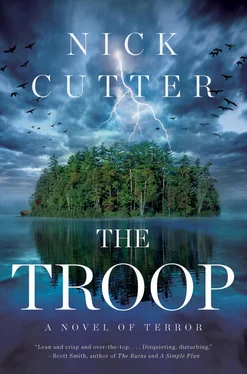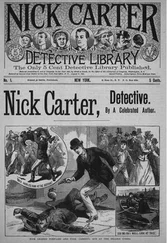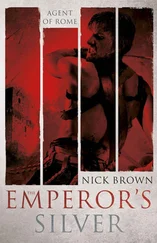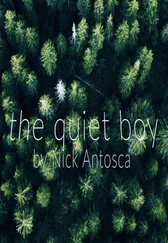They buried the turtle in the forgetting sand of the beach.
________
“DEVOURER VERSUS CONQUEROR WORMS: THE DUAL NATURE OF THE MODIFIED HYDATID”
Excerpt from a paper given by Dr. Cynthia Preston, MD, Microbiology and Immunology, at the 27th International Papillomavirus Conference and Clinical Workshop at the University of Boston, Massachusetts.
The second breed of worm, the “conqueror,” is more interesting than the “devourer.” It is, for lack of a better term, a “smart” worm.
As we know, the ability to manipulate the physical makeup of their host is a trait of some tapeworms. Take the African worm, H. diminuta . Their primary hosts are beetles, who frequently ingest rat droppings infected with tapeworm eggs. The first thing H. diminuta does upon entering a host is to locate the reproductive organs and release a powerful enzyme, sterilizing the beetle.
Why? So that the beetle does not waste any more energy on its reproductive system, allowing H. diminuta to further exploit the beetle’s metabolic resources.
This is one such display of the manipulative “intellect” of tapeworms.
Dr. Edgerton’s conqueror worms work in concert with the devourer worms—or, more accurately, they abet the devourer’s massive appetite.
Once the mutated hydatid enters a host, it forms a colony in the host’s intestinal tract. Once situated, a single conqueror worm emerges. The exact biology behind this is unknown; theoretically it may be similar to the method by which a bee colony selects its queen.
The conqueror worm is significantly larger than its devourer brethren. It perforates the intestinal wall and makes its way to the spinal column. From there it ascends to the base of the brainstem. Some conquerors twine around the host’s spine, climbing it in the manner of creeping ivy climbing a parapet; others infiltrate the column itself by easing through a gap in the vertebral discs and entering the host’s cerebrospinal fluid.
As it ascends, the conqueror lays eggs. These are reserve conquerors, one might say, in the event the queen expires. The conqueror larvae swim through the host’s bloodstream and infest the strata of muscle tissue in the host’s extremities; they are what account for the “bee-stung” look on several of Dr. Edgerton’s test subjects: these are nesting conquerors. This is also a sign of a full-blown, late-stage infestation.
Once the conqueror worm enters the cranial vault, it injects a powerful neurotransmitter into the host’s basal ganglia. The purpose is simple: it puts the host’s appetite into overdrive. Imagine a car with a brick wedged on the gas pedal: that’s the runaway hunger drive that a conqueror kindles in its host.
All the host wants to do is eat . In time, what it eats ceases to matter. Whether it is nutrient-rich or even properly “food” isn’t something the host takes into account.
Anecdotal evidence taken from Edgerton’s lab indicates that the conqueror worm’s neurotransmitter may have several other hallucinogenic or psychotropic effects. Edgerton’s videos show animal subjects behaving incredibly oddly; at times they appear to be unaware what is happening to them. Perhaps there is a “masking” effect: the host views itself as healthy—even healthier than before—while the devourer worms destroy it. This may enable the hosts to maintain a positive outlook, making them more productive, therefore gathering more food, therefore prolonging the lives of the worms. Otherwise they may have simply given up and died.
The conqueror worm’s primary value to its colony may be the propagation of a positive mind-set of its host—the longer the host believes it can survive, the more the colony can feast upon it.
Testimony given by the lone survivor of the Falstaff Island tragedy seems to justify this hypothesis. The boy stated that his infected troop-mates seemed, and I quote, “stronger… happier, even when they were falling apart. They couldn’t see themselves for what they really were.”
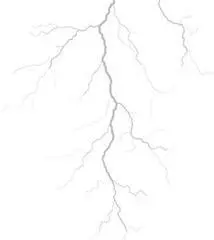
31
“EEF… EEF, you still there?”
The knife slipped from Ephraim’s hands. It kept on slipping. He couldn’t get a good grip. It was all the blood. His hands were greasy with it. It shone on his fingers like motor oil in the moonlight.
He’d seen it.
He’d cut a satisfyingly deep crescent around the knob of his ankle bone—he’d glimpsed sly movement there. A faint pulsation that on any other day he might have dismissed as the heavy beat of his heart through a surface vein—but now, today, no .
And he’d cut too deeply. He knew this immediately. His hands had been shaking too hard in his excitement—in his need to find it. His skin opened up with a silky sigh, as if it had been waiting all his life to split and bleed. The inner flesh was a frosty white, as if the blood had momentarily leapt clear of the wound.
In that instant, he’d seen it.
Terror had seized his heart in a cold fist. Undeniably, it was inside him. Feasting on him. Coiling round his bones like barbed wire around a baseball bat.
But on the heels of terror came a strange species of relief. He was right . It was just like Shelley promised. He wasn’t crazy.
“Shel?” He coughed. A carbolic taste slimed his tongue, in his sinuses and lungs, burrowing into his bones to infuse the marrow with the flavor of tar. “Where did you go?”
“I’ve been here all along, friend. Don’t you remember?”
“Ug,” was all Ephraim said. A warm, sluglike blob passed over his lips, falling to the carpet of pine needles with a wet plop. Ephraim couldn’t see what it was—didn’t want to.
“Did you see it, Eef?”
“Ub.”
“What did it look like?”
He’d seen only a flash. It was thicker than Ephraim ever thought possible. Fat as a Shanghai noodle. Its head—he’d found the head —split into four separate appendages. They looked spongy but predatory, too, like the petals of a lotus blossom or a snake’s head primed to strike. It’d flinched like an earthworm when you ripped back a patch of grass to find it squirming in the dark loam; its body had whipped madly about as it withdrew into the sheltering layers of his muscle tissue.
“Oh no you don’t,” Ephraim had hissed.
He’d dug his fingers into the wound and tweezed with his fingertips. He felt the bare nub of his ankle bone—cold as an ice cube. His fingers closed around the worm, he was sure of that… almost sure. The parted lips of his flesh were rubbery and slick, gummed with the blood that was still flowing quite freely.
He’d gotten hold of it, just barely. A strand of spaghetti cooked perfectly al dente (“to the tooth,” as his mother would say): a mushy exterior with the thinnest braid of solidity running through it. Did worms have spines? Maybe this one did.
Squeezing his fingers, he’d tried to pinch his nails together, praying he could decapitate the horrible thing. Afterward, he figured he could pull the rest of its limp body out using the Swiss Army knife tweezers. If he was unsuccessful, he guessed it would just rot inside of him. It might create internal sepsis. His innards could be riddled with ulcerated boils and pus-filled lesions. He might die screaming, but at least he’d die empty rather than infested.
He’d die totally alone.
In that moment, he’d thought: Do I really want that, to die alone? Where were Max and Newt? It was nearly dark by then and they’d promised to return. Instead they’d abandoned him. Max, his best friend, had left him alone. Friends until the end? Bullshit. Ephraim only had one friend left in the whole world.
Читать дальше
